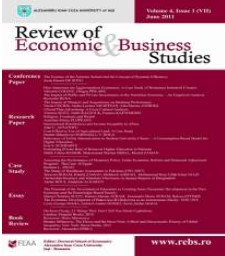AN ATTEMPT TO CAPTURE LEPTOKURTIC OF RETURNS AND TO MODEL ITS VOLATILITY: THE CASE OF BEIRUT STOCK EXCHANGE
AN ATTEMPT TO CAPTURE LEPTOKURTIC OF RETURNS AND TO MODEL ITS VOLATILITY: THE CASE OF BEIRUT STOCK EXCHANGE
Author(s): Elie BouriSubject(s): Economic history, Transformation Period (1990 - 2010), Present Times (2010 - today), Financial Markets
Published by: Editura Universităţii »Alexandru Ioan Cuza« din Iaşi
Keywords: Beirut Stock Exchange; GARCH; EGARCH; Leverage Effect; Volatility;
Summary/Abstract: Repeated turmoil in equity indices in developed and emerging markets puts pressures on market participants to deal with the intense volatility of returns. After examining the normality of daily returns in Beirut Stock Exchange (BSE) from June 1999 to May 2011 with Jarque-Berra test (1980), we have compared the Generalized Autoregressive Conditional Heteroskedasticity (GARCH) model of Bollerslev (1986) with the Exponential Generalized Autoregressive Conditional Heteroskedasticity (EGARCH) model of Nelson (1991), under three distribution assumptions: the Gaussian, the t-Student and the General Errors Distribution (GED). Empirical results showed that the distribution of daily returns is far from being normally distributed, with fat tails and volatility clustering being persistent. Furthermore, the asymmetric EGARCH-GED model is found to adequately fit the data and incorporate the leverage effect. Surprisingly, good news generates higher volatility than bad news which gives investors in the Lebanese stock market a particular immunity to negative shocks.
Journal: Review of Economic and Business Studies (REBS)
- Issue Year: 2011
- Issue No: 8
- Page Range: 259-271
- Page Count: 13
- Language: English

